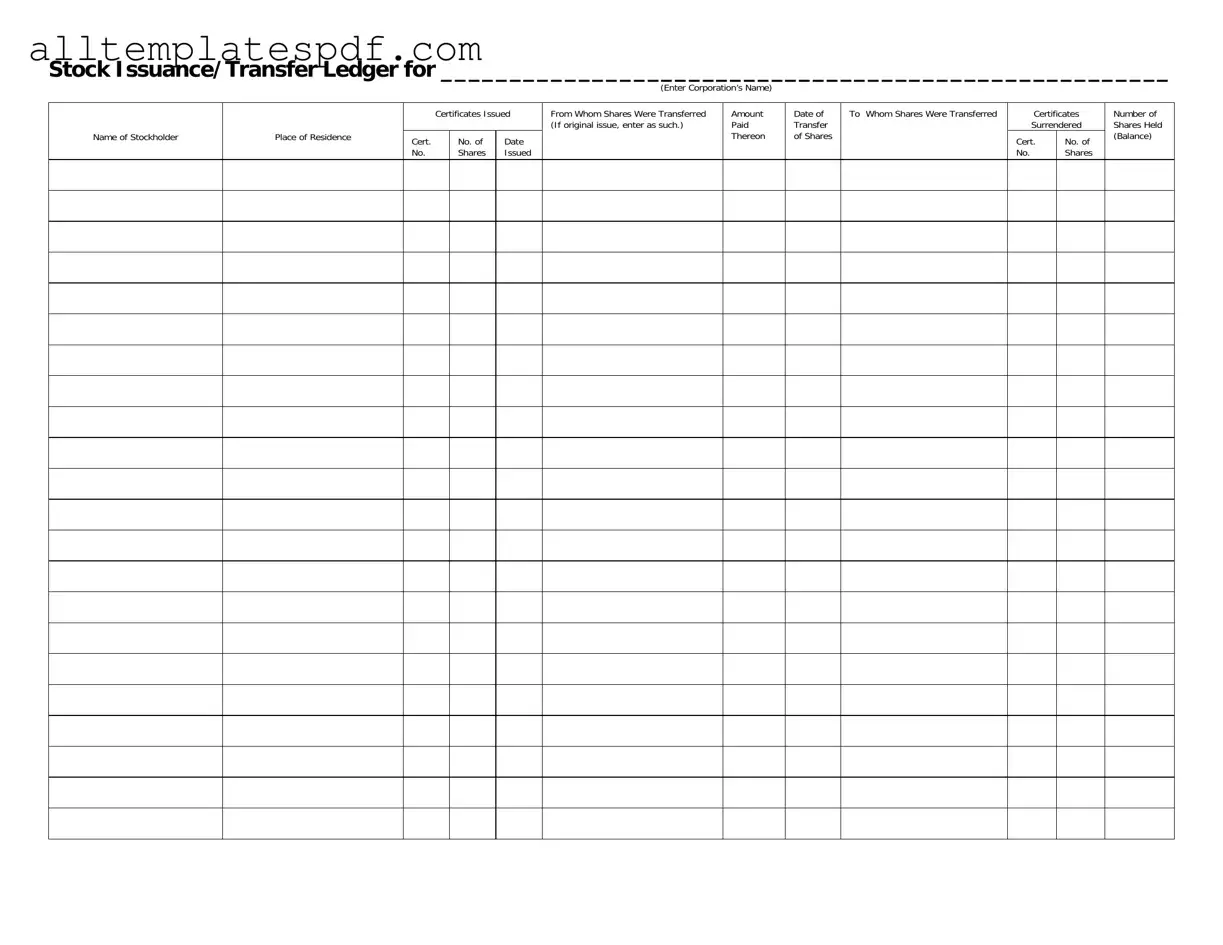Filling out the Stock Transfer Ledger form requires careful attention to detail. One common mistake occurs when individuals fail to enter the corporation’s name accurately. This can lead to confusion and potential disputes later on. Ensuring that the name matches exactly with the registered name of the corporation is crucial for maintaining clear records.
Another frequent error involves the stockholder's name. Sometimes, people mistakenly provide an incomplete name or use nicknames instead of the legal name. This inconsistency can create complications in ownership verification. It is essential to use the full legal name as it appears on official documents.
In the section for certificates issued, individuals often neglect to record the certificate numbers. Each certificate has a unique identifier, and omitting this information can hinder the tracking of shares. Accurate entry of certificate numbers helps maintain a clear chain of ownership.
When indicating the number of shares issued, some may miscalculate or misstate the amount. This can lead to discrepancies in the ledger. Double-checking the figures before submission can prevent future complications and ensure that all parties have a clear understanding of the share distribution.
People sometimes forget to include the date of transfer of shares. This date is significant as it marks the official change in ownership. Without this date, the ledger may lack essential information needed for legal or financial purposes.
Another common oversight is failing to specify from whom shares were transferred. This section should clearly indicate the previous owner of the shares. Missing this information can create confusion and may complicate future transactions involving those shares.
In some instances, individuals may not surrender the certificates when transferring shares. This mistake can lead to issues with record-keeping and ownership verification. It is vital to ensure that all certificates are surrendered and properly noted in the ledger.
Additionally, people might overlook the section that requires the number of shares held (balance) after the transfer. This information is crucial for understanding the current ownership structure. Failing to accurately reflect the balance can result in misunderstandings about share ownership.
Lastly, individuals often forget to sign or date the form upon completion. A missing signature can render the document invalid. Ensuring that all required fields are filled out and signed is essential for the form to be legally recognized.
